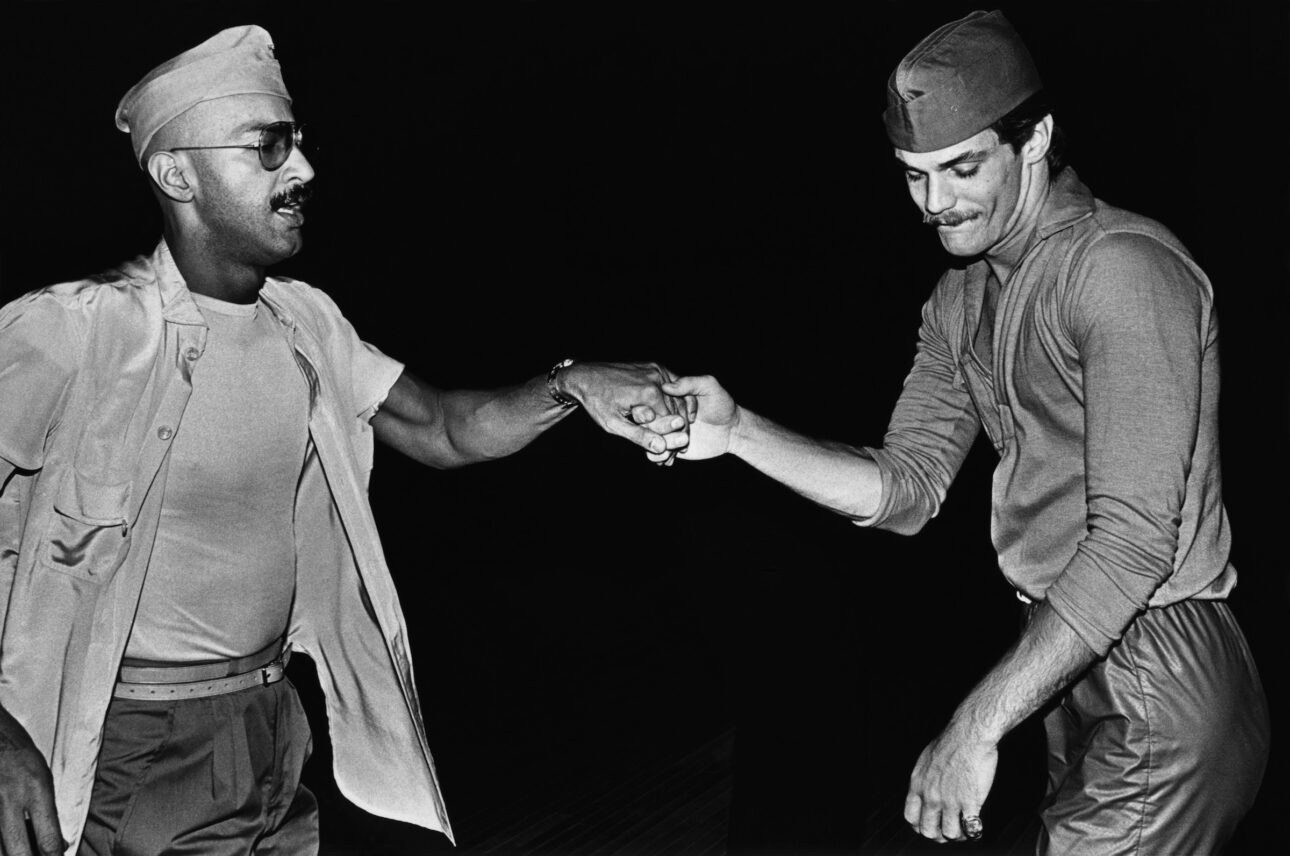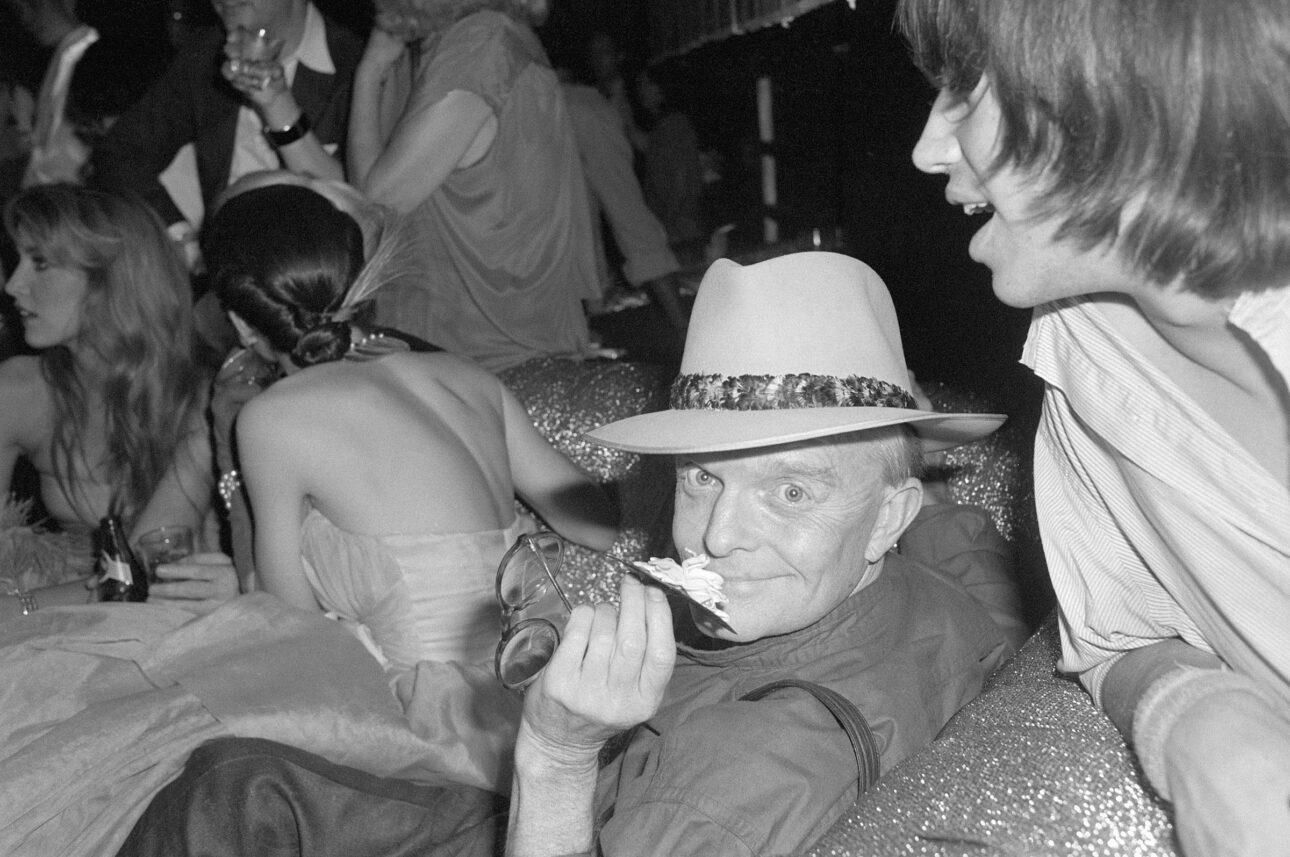Disco never died. The people who attended the Disco Demolition Night at Chicago’s Comiskey Park might have thought they were killing it. And those that have watched the footage might point to that event as the final nail on the coffin, but as the three-part documentary series Disco: Soundtrack of a Revolution clearly lays out, disco has always been alive, if not always well.
A joint production from BBC Studios and PBS with Grace Chapman as series director, Disco is a forensic examination of the movement from every aspect. The origins of disco in the Black and Brown gay clubs of New York City is commonplace knowledge, but Disco sets the story in the social, political, economic, and musical context of the time. As Chapman says, “At the heart of disco is joy, using music and dance to be yourself. It’s a form of liberation, but that liberation always takes place in the context of a wider world and a fight.”
Extensive archival footage shows not only the nascence of the scene but also the environment of its evolution. The story is filled out with firsthand experience of talking heads, among them Nicky Siano. One of the key voices, Siano is a disco originator with his club The Gallery and a resident DJ at Studio 54. He is the linchpin of the series, which also features evergreen artists such as Nona Hendryx and Candi Staton. Current artists weigh in, including David Morales, Honey Dijon, Colleen “Cosmo” Murphy, Jessie Ware, Jocelyn Brown, Jamie Principle, and Marshall Jefferson. Additionally, sound engineers, club and radio DJs, activists, music critics, photographers, partygoers, and music producers of the time are interviewed. Everyone is filmed in warehouse, club or studio settings, keeping the feel and the energy of Disco intact.


Chapman drew from her personal experience as the daughter of disco-running parents. “I joke that I was born under a glitter ball,” she says. “From growing up in that disco environment and hearing the music and hearing the passion that my parents put into it, I always saw the joy in disco.”
The hour-long episodes have sharp focus. “Rock the Boat” explores the roots of disco without shying away from the dark side of the queer community’s experience, including murders, unjust job firings, activists’ underground movements and overground actions, and of course the Stonewall Riots. A granular breakdown of how the individual sounds came together to form what is familiarly known as disco is unpacked, in particular the Trammps’ drummer Earl Young’s creation of the disco beat.
“Ain’t No Stoppin’ Us Now” shows disco’s shift from the underground to the mainstream, from outsider to insider. In this episode are the songs most identified with the genre, and the disco divas are given their due through the specific lens of Stanton, Thelma Houston, and, later, the rise of women through disco with Donna Summer at the pinnacle. The Bee Gees’ indelible impact and success was the final word on the acceptance of disco. The social context is ever-present, including the Vietnam War and queer trailblazers Harvey Milk and Sylvester.
The final episode, “Stayin’ Alive,” is summed up best by Scissor Sisters’ Ana Matronic: “Garbage cash-grab music coming out of garbage cash-grab record labels.” This is when 200 radio stations changed to an all-disco format and what spurred Disco Demolition Night. The crushing of disco was aimed at the record companies, but it was the artists who suffered from the fallout.
Disco continues the story, tracing the evolution of the sound to house music from David Mancuso and The Loft in New York City to Frankie Knuckles and the Warehouse in Chicago. It brings it to the present day and Beyoncé’s Grammy-winning Renaissance. As Chapman says in reference to the series title, “At every point it’s a revolution of minority groups who use disco as a place to feel they are themselves and can be free and are using it as their way forward.”
The music was an musical representation of the feeling, which, as Siano tells SPIN, is summed up in “Love is the Message,” the song he discovered and upon which he bases his life ethos. Still animated at 69 years of age, Siano paints a colorful picture as he recounts vivid memories from his prime disco years.
SPIN: What was your introduction to what later became disco?
NICKY SIANO: I spent a lot of time at David Mancuso’s The Loft as a young teenager. I went to The Loft for the first time when I was 15 years old. I immediately heard the sound was different at David’s. The second time I was there, I said, “I want to do what he’s doing.” My first job was at this place called The Round Table, and it had an okay sound system, but I always knew that on a Saturday night at 4 in the morning when I ran to The Loft for two and a half hours, I would hear the sound that was different from everything else.
Do you have favorite moments in the series?
What I love about the series is Grace [Chapman] couched it in the social unrest of the time and how it was born from that. Disco was built from the ashes of Stonewall. No doubt about it. We started dancing right after those riots happened. The Loft opened in 1970. The Stonewall riots were in ‘69. It’s no coincidence that this all unfolded in those few years. Marvin Gaye’s album comes out one year later, almost to the day, the peace treaties are signed. That album was everywhere. Every mom, dad, and child had a copy, and we were all singing those lyrics. Vietnam, out the window. The Civil Rights movement, the gay rights movement, all of that unrest, and then the first disco songs are “Love Train,” “Little Bit of Love.” Everything was about, “Let’s hold hands. Let’s join together. Let’s make this a better world.” Records that had words that spoke to the condition of the world to the feelings of love, those were the records that really moved me. There were a lot of instrumentals too. But I never got into anything with “disco” in the title.
How did your legendary club The Gallery reflect what was happening with disco?
There were two things I felt about The Gallery. One, friendship. We would deal with the same people every week. We called it invitations, but really it was like a membership. They were maintaining little cliques, which created friendships that still exist today. Those friendships were really important to the content of my music, which spread the love epidemic all around the world. You don’t do it alone. You can’t do it alone. You have to do with someone or with a group. It’s more powerful, and it works better. You always need support in life. You can’t do life alone. It doesn’t work well. I wanted to build friends, and a place where they could go on Saturday night and unite with purpose. That purpose was in the music. I would introduce a song and play it four or five times that night. We were the radio. Radio wasn’t playing any of this music. Radio, when it introduces something, it plays it a lot, puts it in high rotation. That’s what we were doing. We would introduce the song one Saturday night and the next weekend, it would be the number one song, and play it only twice, and it would knock the roof off the place. Second thing was the atmosphere that was being watered within. Everything I did was for the experience of dancing and of audio.


Clubs like The Gallery provided a performing space for disco divas, which the series explains was a real financial boon for these singers. What’s your key disco diva memory?
The night I met Grace Jones. Her first record “Sorry”/”That’s the Trouble” was out on 12-inch. “That’s the Trouble” became her first dancefloor hit. It was on a small label called Beam Junction and it was put out by her managers Sy and Eileen Berlin. They called me up because they really wanted me to play the record, and they said, “You want to meet Grace? Come to our house and we’ll introduce you to her.” Me and my friend Michael smoked angel dust, and we are fazooted out of our minds. We go up to this 77th and Park Avenue penthouse. I don’t know who Grace is. Half an hour later, she walks in with the lampshade on her head, totally Graced out, and she sings both songs to me. I say to her, “Saturday night, The Gallery, be there, you’re going to sing these songs.” And she said, “Oh, that would be wonderful.” And then she leaned into me, she said, “Whatever you’re on, I want some.”
Her shows have gotten so good. She’s still late all the time. She was notorious. I remember waiting three hours one night at The Tunnel. A View to a Kill had just come out and she was doing one song. Her manager at the time, Bob Caviano, good friend of mine comes out and goes, “Nicky, go back there, talk to her.” I was like, “What am I going to say? She’s in a whole different category from when I met her. She comes out and does the song. She’s 10 feet up. There’s a pillow below her, and she just face-forward dives down onto the pillow. Only Grace would do stuff like that. Another time she was rising out of the stage in a cage with tigers. It was so hot in there she couldn’t get into the cage—the cats were too agitated—so she had to go on top of the cage with a whip. At Studio 54, right from the ceiling, here comes Grace, being lowered from the scrim. I really enjoy Grace.
Did you DJ for Bianca Jagger’s birthday party at Studio 54?
Studio 54 was closed. It was maybe 40 of her friends. I looked down and there was Liza [Minnelli], Truman Capote. All the designers were there: Calvin, Halston. Mick was there. All the Stones were there and their wives. Stevie [Rubell] came up to me and said, “Do you have a Rolling Stones record?” This is before “Miss You” was out. The one Rolling Stones record I always carried with me because it was very danceable and I loved the way it sounded on a good sound system was “Sympathy for the Devil.” I put that on. The scrim in the back went up and revealed the letters of Bianca’s name as tall as the proscenium, which is about one and a half stories. It had little twinkle lights, and it was blinking. She rode in on that white horse. Seventy-two photographers must have been in the wings waiting to come in because they weren’t in the club. She looked like she was scared to death. I knew her personally, and she’s not the brightest twig in the bunch. I was like, “Okay, this is a waste of money.” I walked outside, and there was a bum in the doorway of the back entrance. And he said, “You have a dollar?” I had such a moment. This was going in the wrong direction. Studio 54 was already 1977, after what I call the big peak of ’75, ‘76, where we really destroyed the charts and radio started following us.
Did the club DJs have that much influence on what was being played on the radio?
It was an unheard-of thing, and we forced that. All the DJs in New York would go on one record and play it together. This is how it would happen: Someone would find a really good song, like when I found Manu Dibango’s “Soul Makossa” on Flatbush Avenue in Brooklyn. I bought all 12 copies, and I gave them to all my DJ friends. If it was really good, we all went in on it at the same time. Barrábas’ “Wild Safari” and “Woman”: David Rodriguez went to Spain, came back with 15 copies of the album, handed it to me and his friends, and they became big hits. We knew right away. We would play a record one weekend, and that week it would sell a quarter-million copies. “Rock the Boat” hit the charts and crawled up to 38 or something like that before it ever hit on the radio play side. We were pretty influential. We destroyed what radio was built on and probably a lot of payola. We were making records hits for free. There was no mistake that Steve Dahl was in radio because I feel radio had a bone to pick with us.
You’re referring to the Chicago radio DJ who was behind Disco Demolition Night at Comiskey Park in Chicago in 1979. The series represents that event in a balanced way from multiple standpoints, but it’s not the actual death of disco, is it?
It wasn’t one thing. It was a combination. It was the radio thing. It was straight guys not wanting to go out to gay clubs anymore with their girlfriends. It was Studio 54’s door policy, which turned away maybe a million people in the three years he was out there. They would have lines out into the street, and he would be really rude to some of those people. Not Mark, but Stevie, he would be really rude: “No, you just don’t look good enough.” I would never say that to someone on a line. You can make up 1,000 excuses. You can’t be rude to people and get away with it all the time. And then the music, there was a real downturn. But house music was born. Paradise Garage turned into a house music venue, and house music was born between Larry Levan and Frankie Knuckles, two of my protégés. They brought it in like gangbusters, and it’s still around today.

